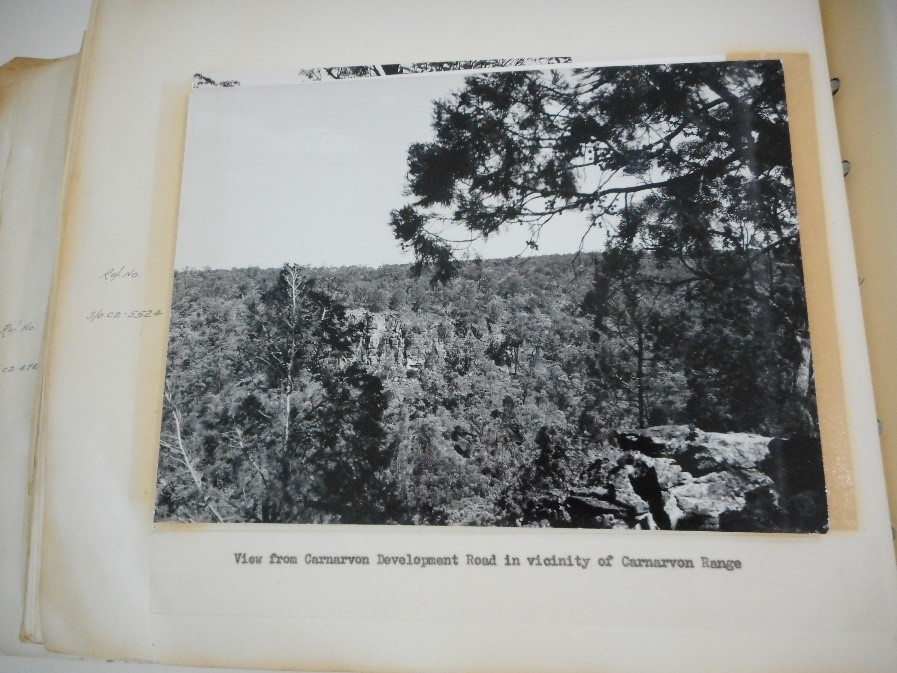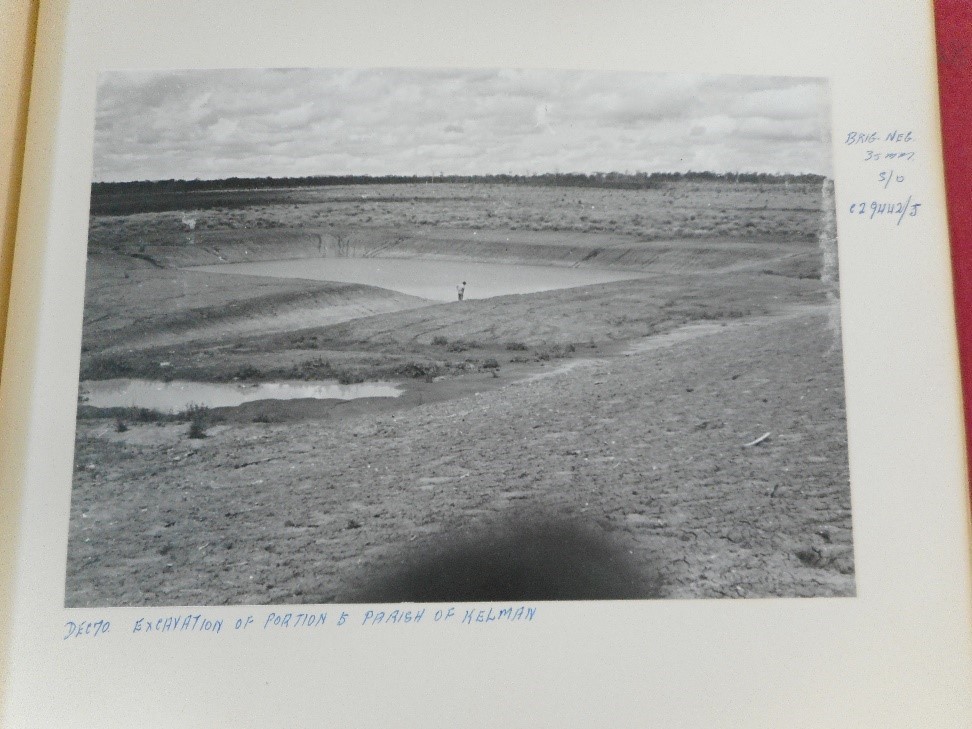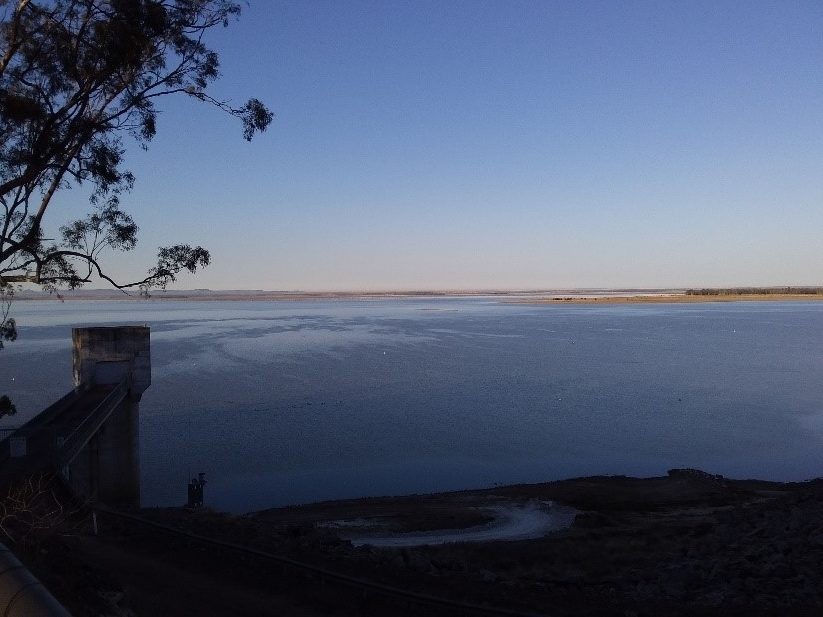‘You won a piece of dirt … but that’s where the lottery part of it finished’: the joys and challenges of being a balloter
By JOL Admin | 19 November 2019
Guest blogger: Dr Jennifer Moffatt, 2018 John Oxley Library Fellow.
Balloting was big in the 1950s, 60s and 70s. The government wanted to increase agricultural production so needed more farmers 1. Balloting land removed the greatest barrier for those wanting to be farmers - the cost of agricultural land.
Outside the large land development schemes (e.g. the Fitzroy Basin Brigalow development scheme and the Emerald Irrigation Area) scheme 2,3 most Crown agricultural land was available, only by ballot, and only landless men with limited financial resources were eligible to apply.

Winning a ballot meant winning the right to lease a block of land. However once the residential condition (living on the land), was met usually 5 to 7 years, and the ongoing development conditions had been complied with, the balloter could sell the lease as if it was his own land, continue to lease it, or purchase it, depending on legislation. He had land!

The joys and challenges are captured by a Wandoan Soldier Settler: ‘you won a piece of dirt which otherwise you never would have been able to acquire, but that’s where the lottery part of it finished, and it was all hard work from there on’4.
The joys
The joy was in the winning: ‘it was every fellow’s dream to have his own piece of land’5. One man won on his 300th attempt 6, for another it was his 190th7. Joy also came with success, years later when they had overcome the challenges, and created a business and future for themselves, and for those who did so, handing on their land to the next generation.
The challenges
Balloters had challenges in addition to those experienced by all farmers. Key was surviving financially until the land was sufficiently developed to produce an income. The land could not produce an income until significant development work had occurred – taking from 6 months4 to 7 years8. Many blocks needed to be fenced, trees cleared and dams built. This was costly work and these were men without funds, so they borrowed. This resulted in financial hardship, with a mortgage, rates and rent to be paid, without having an income to draw on.

Additionally early living conditions were sometimes basic, for example it was ‘the goannas and I, and the caravan’4, and isolated, with ‘any medical, hospitalised assistance, or even doctors, it was a long distance to travel’9.
Many of the blocks were too small to support a family and often new uses of the land were required, such as cropping in pastoral areas. The degree of government support and knowledge was variable, so much experimental work was undertaken by the balloters as reported here: ‘it was all trial and error’10.
The challenges were too great for some balloters, others sold as soon as they could to invest in a larger holding, and many stayed. Those who met the challenges endured the hardship, and they drew on their strengths and networks as they chased their dreams. They became astute business operators, adapted or increased their knowledge and skills. They developed not just their land, but created communities as well.
For resources about land ballots search on the tag ‘land ballots’ under ‘tags’ in the State Library of Queensland's One Search catalogue. To contribute to the project contact the State Library of Queensland qldmemory@slq.qld.gov.au or via jennifermoffattconsulting.com.au
Jennifer’s project is titled: The story of Queensland’s selectors. How those who won land in a ballot contributed to Queensland’s social, economic and political development. The aim has been to fill a knowledge gap in Queensland’s history to complement the history of pioneers, squatters and land development.
Blogs by Dr Jennifer Moffatt
- Land ballots in Queensland
- ‘It was their baby’: Land ballots and the Fitzroy Basin Brigalow Development Scheme
- ‘You won a piece of dirt … but that’s where the lottery part of it finished’: the joys and challenges of being a balloter
- Land ballots. The ‘gift’ with a price attached
References
1Queensland Royal Commission on Pastoral Lands Settlement, Report of the Royal Commission appointed to investigate certain matters relating to the pastoral industry in Queensland. 1951, Government printer: Brisbane.
2Queensland Land Administration Commission Fitzroy Basin, The brigalow scheme in Central Queensland 1962-1978. 1979, Land Administration Commission Department of Lands: Brisbane.
3Queensland Department of Primary Industries, Emerald Irrigation Scheme: a Project to Stabilise and Increase Production in Queensland. 1967, Queensland Department of Primary Industries: Brisbane.
4Balloter 1 in the Wandoan area interviewed for the Land ballot project in 2018. This was a Wandoan Soldier Settlement Scheme block won in 1954.
5Descendent 1 of balloter in the Wandoan area interviewed for the Land ballot project in 2018. This man's father won a Wandoan Soldier Settlement Scheme block in 1954.
6Balloter 2 in the Taroom area interviewed for the Land ballot project in 2018. This was a block in the Brigalow scheme drawn in 1968.
7Descendent 2 of balloter in the Taroom area interviewed for the Land ballot project in 2018. This man's father drew a block in 1957.
8Balloter 3 in the Springsure Rolleston area interviewed for the Land ballot project in 2018. This man won a block in the Brigalow scheme in 1963 and moved there with his wife.
9Descendent 3 of a balloter in the Theodore area interviewed for the Land ballot project in 2018. This man's father was a returned Serviceman who won a block at Theodore in 1959.
10Descendent 4 of balloter in the Emerald area interviewed for the Land ballot project in 2018. His father won an irrigation block in the Emerald area in 1974.
Comments
Your email address will not be published.
We welcome relevant, respectful comments.